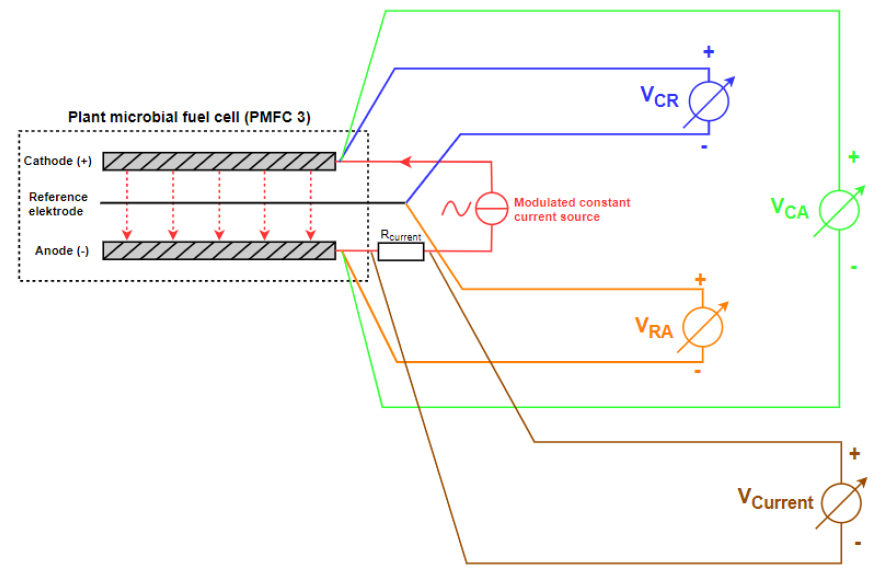The initial project of the minor was specified as the “Plant source project”, which during my previous internship at NXP included designing a circuit board/ measurement setup for doing so called EIS (electrochemical impedance spectroscopy) measurements. These were needed for special designed bio chemical cells named PMFC’s (plant microbial fuel cells) from the company Plant-e. We want to learn more about the (electrical and biological) properties of these very unique cells, since they can deliver a small voltage/current and can even charge themselves over time.
So, in summary, this minor is about developing and debugging a measurement setup and using this setup for researching the properties of PMFC’s. The photo below shows a part of the measurement setup, more specifically the placement of the reference electrode.

Project description
The measurement setup consists of: DC-voltages sources, a tone generator, the impedance measurement circuit board, the PMFC under test, and an oscilloscope. Matlab is used for post-processing the measurement results.
During the first part of the BeCreative Minor, the impedance measurement board was redesigned and debugged. In the second part, it was applied to run many different measurements to investigate the electrical properties of the PMFC. Actually doing this research work, gave me a lot of insights into analogue electronics, measurement techniques, and the interpretation of measurement results for a specific target application. Furthermore, working in a multi-disciplinary research team was very interesting.
Without going into details, a schematic of the complete measurement setup is shown below.

After the circuit was finally finished to the point in which reliable data could be gathered, it was time to convert the acquired data. This was done by making use of the MATLAB tools and self-made scripts for decrypting the binary files, that were generated by an already made LabVIEW program. In this case Nyquist and Bode plots. From these plots and other data, certain aspects of the cells could be acquired and modelled into electric or bio chemical components.
Project results
Based on the measured data, a model of the PMFC was developed. This model contains two parametric parts:
- Bacterial current generation
- Electrode impedance
The model fits very well with measured data. A non-linear least squares fitting method was used.
Final conclusions
- PMFC’s are capable of delivering small amounts of energy to integrated circuits (IC’s) that evaluate its environmental states.
- This can be achieved by EIS measurements that are translated into key figure parameters of a representative equivalent electrical circuit.
- The relationship between the PMFC environmental states and associated key figure parameters is currently unknown and should be further investigated.